Graveyards of the Atlantic
Wednesday, 28th October 2009 by Keith Tyler
New writer: Keith Tyler Keith is a Software QA Engineer based near Seattle, and is originally from Boston. He's a veteran geocacher, and a prolific submitter of Google Maps sights on VirtualGlobetrotting.com.
The rocky East Coast of North America is dotted with islands and rocky shoals which have been a treacherous problem for ships since the beginning of cross-Atlantic seafaring. Many of the famous coastal shipwrecks are the result of sandbars – shifting, shallow mounds of sediment often hiding just beneath the surface of the water and impossible to detect at night. Ships run aground on the invisible sandbars, sometimes incurring serious damage and ending up beached when the tide rolls out.
A number of islands and coastal features, notorious for attracting shipwrecks due to their prevalence for sandbars, have received the ominous nickname "Graveyard of the Atlantic".
1. Sable Island, Nova Scotia (Canada)
Sable Island is a narrow, 42 km long crescent-shaped barrier island1 about 180 km off the coast of Nova Scotia. Perhaps the oldest and best documented of the Atlantic Graveyards, between 1583 and 1999 Sable Island lured over 350 ships to their doom.
Most of the shipwrecks have today been washed away or buried by the shifting sands, and the Google imagery of the island doesn't include any visible wrecks; but the precarious sandbars are visible just off the island's edges.
The government of Nova Scotia has produced a map listing the location, names, and dates of about 200 Sable Island shipwrecks which occurred between 1797 and 1946.
Sable Island today is a nature preserve, known as much for its wild horses and endemic species as for its dark nautical history.
2. Cape Cod, Massachusetts (USA)
Perhaps Massachusetts' most noticeable geographic feature, Cape Cod is the large "hook" extending from the state's south shore. Known today as a major seaside resort area, and the playground of New England's upper classes, Cape Cod was one of the first places visited and settled by Europeans in the New World. As a result, it became a major shipping destination from colonial times through the 1800s.
While the long peninsula offers excellent protection from storms and heavy ocean currents to the inner waters of Cape Cod Bay, the interaction with the ocean generates many long, treacherous shoals. Over 3,000 ships are believed to have wrecked off the shore of Cape Cod between 1626 and 1898, including American War of Independence vessels like the decorated HMS Somerset. Over 20 lighthouses lie along Cape Cod's eastern shoreline to warn navigators of the danger.
The sheer amount of shipwrecks on Cape Cod made it a haven for "mooncussers", the pejorative term for scavengers who would, upon discovery of a wreck, rush out in skiffs and gather up any lost cargo and other goods, to then sell for their own profit. During this time the Cape became known as "Graveyard of Ships".
Recently, the remains of a 19th century 50-foot schooner washed ashore on Newcomb Hollow Beach, well-preserved by the shifting sands for an estimated 90 years or more, so perhaps you'll be the one to discover more undiscovered wrecks in the satellite imagery.
3. Outer Banks, North Carolina (USA)
From North Carolina to the mouth of the Chesapeake Bay in Virginia lies a series of barrier islands known as the Outer Banks. Like the long, curved shores of Sable Island and Cape Cod, this coastline has been responsible for over 1,000 shipwrecks dating as far back as 1526. Just like the others, this stretch of shore is also nicknamed "Graveyard of the Atlantic", but it's also home to the Graveyard of the Atlantic Museum.
The coast between South Carolina and Virginia is lined with sunken vessels, many of them naval ships such as the most famous of the area's shipwrecks, the USS Monitor, an early ironclad warship that saw action during the U.S. Civil War. The Association of Underwater Explorers has a map showing some of the most notable shipwrecks off the North Carolinian coast.
(Another area known for its shipwrecks is the Florida Keys, with hundreds of shipwrecks dating as far back as 1733. This area has not been granted the title "Graveyard of the Atlantic" but is known as Shipwreck Trail.)
You can read more about Sable Island, Cape Cod and the Outer Banks at Wikipedia.
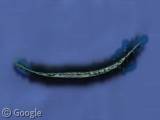
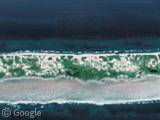
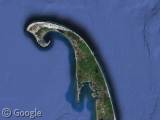
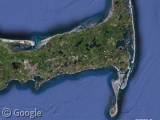
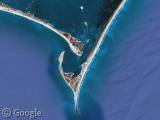
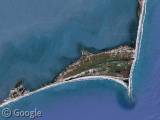
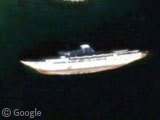
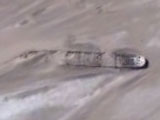
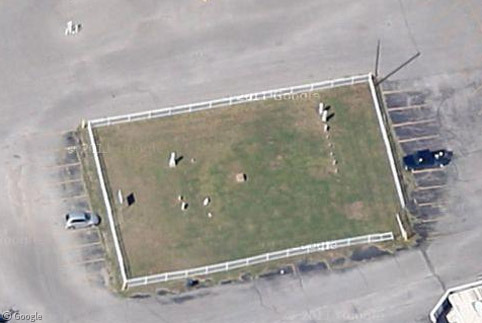

“Rocky East Coast of North America”? There is barely a rock on the entire coastal plain of eastern NA! Certainly, from somewhere north of New Jersey to south to Texas there are any rocky shore. The introduction to your post suggest that these ships rode hard against a rocky shore line. That’s certainly not true for the Outer Banks, Cape Cod is a relatively rocky beach, but sand for the most part, and Sabine Island I need to check.
Damn, the GE imagery date for Wellfleet is July 29th, 2007. The schooner washed ashore in 2008. No luck yet.